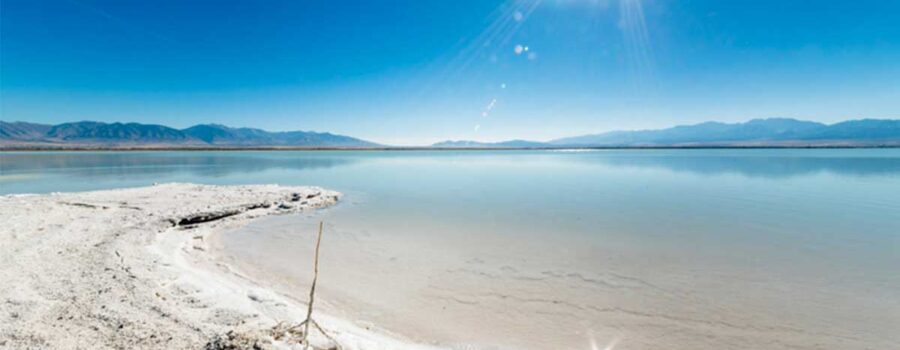I wanted to bring your attention to a concerning environmental crisis that’s unfolding right here in my home state of Utah—the Great Salt Lake is in serious trouble. You might not think much about it, but this magnificent natural wonder is on the verge of disaster due to the worst drought in recent history. The lake is shrinking at an alarming rate, and it’s affecting more than just our recreational activities.
Think about the impact on our local ecosystem and economy. The brine shrimp industry, which is vital for many families, is under threat. But there’s an even bigger concern that often gets overlooked—the toxic dust pollution that’s becoming increasingly dangerous.
As the lake dries up, it exposes a Pandora’s box of pollutants, including naturally occurring and human-induced heavy metals like arsenic. Can you believe that the retreating waters have revealed around 800 square miles of exposed lakebed? That’s equivalent to the entire surface area of Maui!
Now, let’s talk about the dust “hot spots.” Researchers have identified three primary areas that are most at risk of dust pollution—Farmington Bay, Bear River Bay, and the remote northwest boundary of the lake. These places have a high potential for dust emissions, and it’s not just an environmental issue; it poses health risks to us and our families.
The full impact on human health is uncertain, but studies have found high levels of arsenic, copper, and other heavy metals in the dust. It’s crucial for further research to determine the potential effects on our well-being. We need to stay vigilant and demand comprehensive studies to understand this evolving threat better.
But that’s not all. We also have pressing challenges related to water usage and conservation in our community. Did you know that Utah has one of the highest per-person water consumption rates in the entire country? And part of the problem is our low water pricing, which fails to incentivize conservation. It’s disheartening that even our attempts to conserve water, like not watering our lawns during drought, face resistance from homeowners’ associations.
Thankfully, our local authorities have started taking some steps to address the crisis. They’ve funded studies, eased the buying and selling of water rights, and mandated water inclusion in cities’ long-term planning. However, some immediate impact proposals, such as requiring water-efficient appliances in new homes or increasing water pricing, have been rejected.
Now, let me draw your attention to an alarming parallel—the story of Owens Lake in California. A century ago, it was a large body of water spanning 100 square miles. But it dried up when Los Angeles diverted its water sources to meet their own needs. Today, Owens Lake is one of the biggest sources of dust pollution in the country, despite Los Angeles spending billions to mitigate the problem.
We need to learn from that experience. Utah faces a significant challenge with the Great Salt Lake, and the immediate solution of refilling the lake seems daunting due to upstream water diversions and the prolonged drought. It took billions to mitigate the dust problem in Owens Lake, and the only real solution was to refill it. This could be a warning sign of what we might face with our beloved Great Salt Lake.
Fellow parents, this crisis necessitates our immediate attention and sustained efforts. With the ongoing drying up of the lake, the urgency to act becomes even more pronounced. It is crucial that we acknowledge and appreciate the value of our natural resources, comprehend the risks associated with neglect, and actively engage in holistic water management and conservation endeavors. Let us advocate for comprehensive research to gain insights into the long-term impacts on our ecosystems.
And here’s a pressing concern—we must address the heavy metal concentration, particularly arsenic, in the drying lakebed. Chronic exposure to arsenic has been linked to serious health issues like cancer and cardiovascular disease. Consequently, comprehensive research is needed to map the extent of the dust problem, ascertain the concentration of heavy metals in the air, and discover effective ways to counter the health effects. Importantly, this issue extends beyond the realm of the environment; it is a critical matter of public health.
As the lake continues to shrink, finding a solution becomes imperative. Moreover, the fate of the Great Salt Lake should serve as a wake-up call for us all. In order to ensure a sustainable future, let’s prioritize valuing our natural resources and comprehending the consequences of neglect. It’s high time we turn the tide before it’s too late.
Together, we can make a difference!
References:
- Flavelle, Christopher, and Bryan Tarnowski. “As the Great Salt Lake Dries up, Utah Faces an ‘Environmental Nuclear Bomb.’” The New York Times, 7 June 2022, www.nytimes.com/2022/06/07/climate/salt-lake-city-climate-disaster.html.
- Blakowski, Molly, et al. “Heavy Metals in Dust from the Shrinking Great Salt Lake: Where Do They Come from and Where Do They Go?” NASA/ADS, ui.adsabs.harvard.edu/abs/2021AGUFM.B41A..06B/abstract.
- “Utahns Are Often Knocked as the Most Wasteful Water Users in the U.S. Are the Numbers Misleading?” The Salt Lake Tribune, 19 Nov. 2022, www.sltrib.com/news/environment/2022/11/19/utahns-are-often-knocked-most/.
- “How Owens Lake Became a Disaster and Why It Could – but Need Not – Happen to the Great Salt Lake.” The Salt Lake Tribune, 11 Oct. 2022, www.sltrib.com/news/environment/2022/10/10/how-owens-lake-became-disaster/.
- Hong, Young-Seoub et al. “Health effects of chronic arsenic exposure.” Journal of preventive medicine and public health = Yebang Uihakhoe chi vol. 47,5 (2014): 245-52. doi:10.3961/jpmph.14.035








